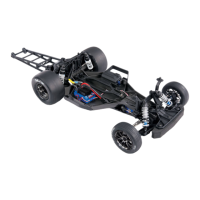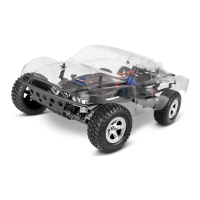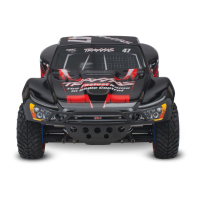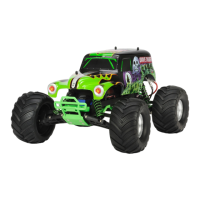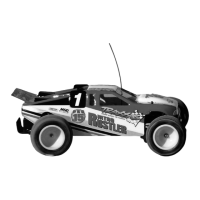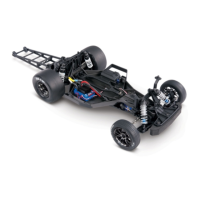
Do you have a question about the Traxxas DRAG SLASH 94076-4 and is the answer not in the manual?
| Scale | 1/10 |
|---|---|
| Drive Type | 2WD |
| Wheel Diameter (front) | 2.2 inches (56mm) |
| Wheel Diameter (rear) | 2.2 inches (56mm) |
| Battery | 7-cell NiMH or 2S LiPo |
| Suspension | Independent |
| Tire Type | Slick |
Find contact information, support resources, and the process for registering your Traxxas model.
Guidelines for reading the manual, understanding its structure, and interpreting warnings and hints.
Essential safety rules for operating the model, including critical battery handling protocols.
Visual identification of the main parts and components of your RC model.
Lists necessary tools, required equipment, and a quick guide to get your model running.
Overview of the radio system, power system, and their key components.
Instructions for installing batteries in the transmitter and model, plus battery selection.
Guides for installing the battery pack and adjusting the wheelie bar.
Learn transmitter functions, safe operation rules, and the fail-safe system.
Adjusting steering trim, multi-function knob, and Traxxas Stability Management (TSM).
Procedures for radio binding, range testing, and proper antenna placement.
Detailed guide on TSM functionality, modes, and adjustments for optimal control.
Details on ESC features, voltage detection, and basic programming.
Guide to selecting ESC operating profiles and understanding LED status codes.
Using the Trans Brake, performing burnouts, and general driving tips for the Drag Slash.
Tips on battery, gearing, and wheelie bar setup for maximum performance.
Important driving safety rules and procedures for running in wet environments.
Adjusting toe-in, camber, and shocks for improved handling and stability.
Fine-tuning motor, gear ratios, and slipper clutch for optimal acceleration and traction.
Procedures for centering the servo and checking key components like the slipper clutch.
Essential checks for damage and cleaning the model before and after use.
Regular checks and replacement of wear items like slipper pads, bearings, and gears.
Maintenance procedures for the motor, shocks, driveline, and suspension components.
Guidelines for storing the model and batteries to maintain their condition.
Detailed explanation of steering/throttle sensitivity, dual-rate, and trim adjustments.
Understanding LED patterns for binding, errors, and system status.
Managing multiple models, locking settings, and deleting models from memory.
Using a smartphone app for advanced transmitter programming and telemetry data.
